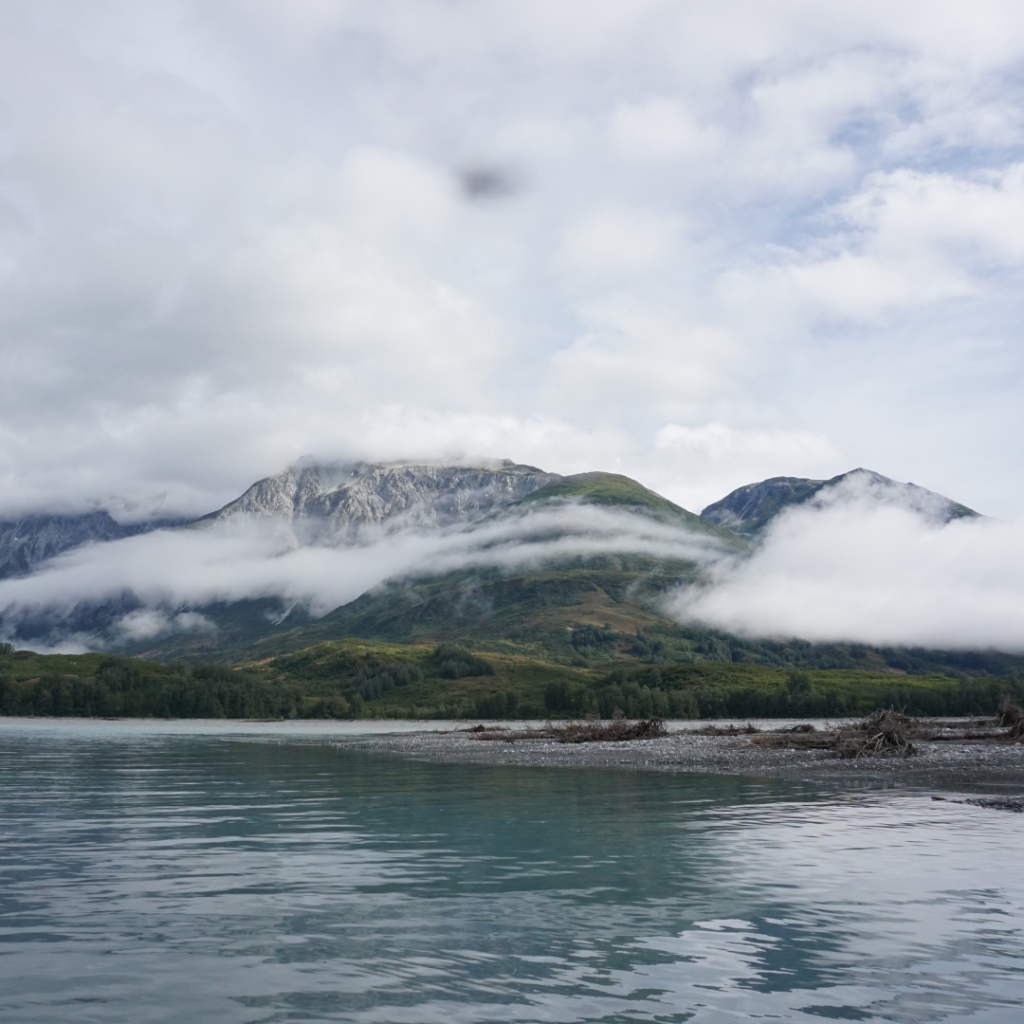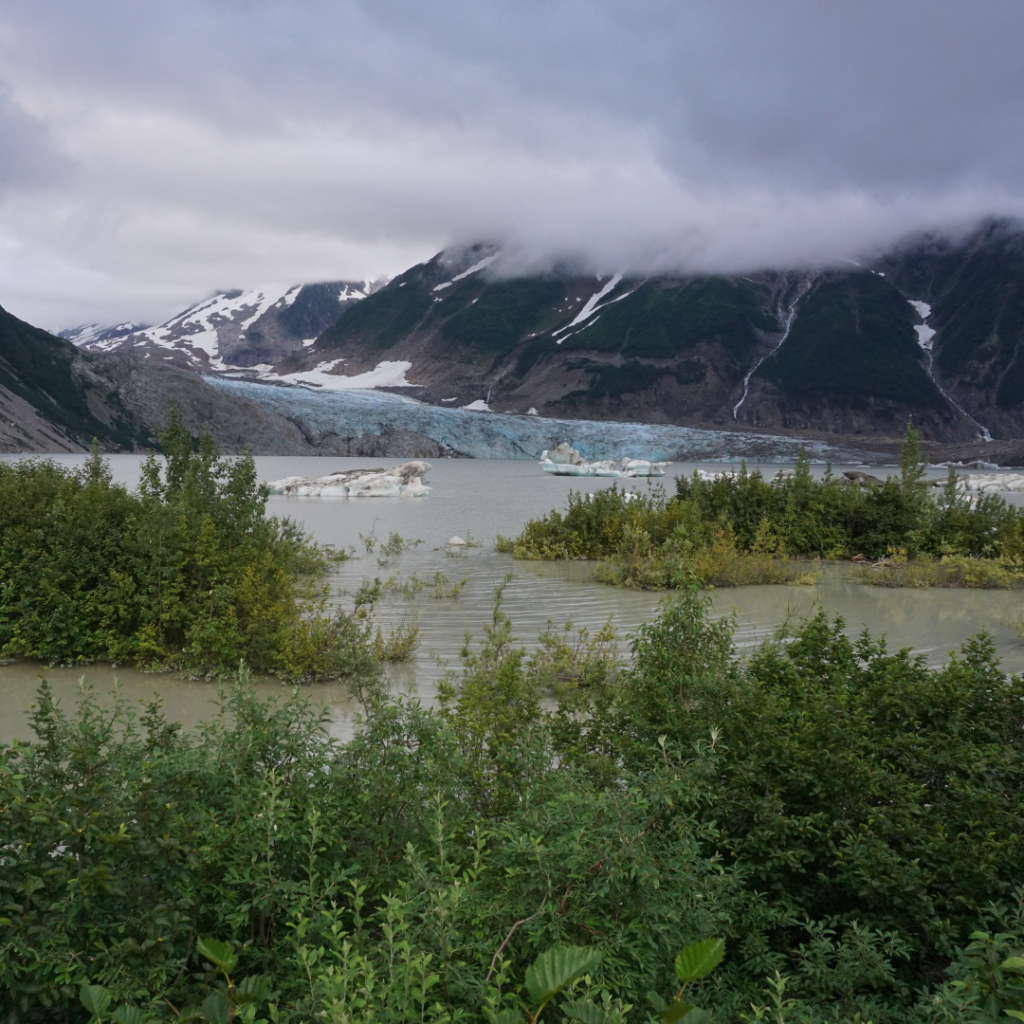Tatshenshini-Alsek Park’s 30th anniversary
Categories:

Tatshenshini-Alsek Park, situated within the traditional territory of the Champagne and Aishihik First Nations, is one of B.C.’s largest provincial parks. Located in the far northwest corner of B.C., Tatshenshini-Alsek is nestled between Canada’s Kluane National Park and Reserve (Yukon), and Alaska’s Glacier Bay and Wrangell-St. Elias National Park and Reserves. Together, the four parks create the largest protected area in the world and were designated in 1994 as a UNESCO World Heritage Site1.
Formally legislated as a Class A Park on October 15, 1993, Tatshenshini-Alsek is well-known for its incredible river systems, glacier-capped peaks, diverse flora and fauna, and as the home to Mount Fairweather, B.C.’s tallest peak. As the 30th anniversary of the park is acknowledged, it is an important time to reflect on the history of the area, the cultural significance to the Champagne and Aishihik First Nations, the advocacy of passionate individuals who worked tirelessly to bring awareness to this dynamic area, and to imagine the future of the park through continued collaboration.
Ancestors of the Champagne and Aishihik First Nations have lived throughout the northwest for more than 8,000 years stewarding the land2. With settlements across present day Yukon and B.C., it is Nuqwa’ik/Àłsêxh (Tatshenshini/Alsek), the most southern part of their traditional territory that offers a connection to their Tlingit Heritage, with the salmon-rich waters of the Tatshenshini River at the heart of this area2. After three years of the park’s establishment, the Champagne and Aishihik First Nations signed a co-management agreement with the province in 19961 and continue to be guardians of the land.
Much of the history of Tatshenshini-Alsek is centered around advocacy, collaboration, and like so many places – industrial exploration. Several small mines existed throughout the park with many of the current hiking routes being old mining roads. In the mid 1950s, significant copper deposits were found, but given the remoteness and limited accessibility no action was taken immediately3. However, by the mid 1980s, a proposal to develop the Windy Craggy Peak into an open pit mine had been presented3. Local guides and conservationists banded together and created Tatshenshini Wild, to begin raising awareness2. The campaigns gained traction and expanded out from the leading Canadian conservation groups to concerned Americans as well3. In 1991, Tatshenshini International was founded and continued an intensive campaign across North America3.
With time, the dedicated advocacy of many conservationists and the Champagne and Aishihk First Nations was heard. Due to the potential environmental risks of the proposed mine, the 30th Premier of B.C., Michael Harcourt, legislated the protection of Tatshenshini-Alsek as a Class A Park in 19933.
Throughout 2024, BC Parks anticipates initiating a new management planning process alongside the Champagne and Ashihik First Nations (CAFN). The foundation of the plan comes from a recently commissioned recreation assessment, an ecosystem overview assessment, and a cultural heritage assessment from CAFN. This plan, with input from stakeholders, recreation users and community members, will lay out the management strategies and direction of the park into the future.
To this day Tatshenshini-Alsek offers a plethora of recreational opportunities for outdoor enthusiasts to explore the rugged wilderness of the northwest, from hiking and camping, to rafting and snowmobiling. The park is home to large animals such as bears, wolves, Dall sheep, moose, and mountain goats. For one amazing creature, the glacier bear – a black bear with blue-ish silver coloured fur – the park is one of the few places in Canada that they are found.
Adventuring in Tatshenshini-Alsek is like a choose your own adventure book, with endless areas to explore. Access to the park is a privilege and visitors are encouraged to be responsible recreators and respectful while enjoying this incredible area. The Champagne and Aishihik First Nations and BC Park staff work hard to manage the area – they look forward to welcoming park visitors and celebrating this 30-year milestone.
Sources:
1 UNESCO World Hertiage Convention – https://whc.unesco.org/en/list/72
2 Champagne and Aishihik First Nations’ website – https://cafn.ca/territory/nuqwaik-alsexh-tatshenshini-alsek/
3 Great Wild Spaces Website – https://www.spacesfornature.org/greatspaces/tatshenshini.html





